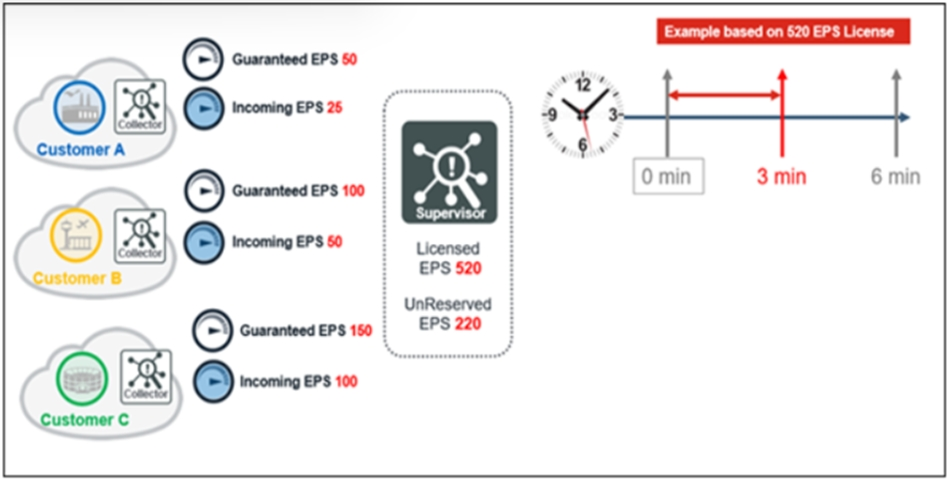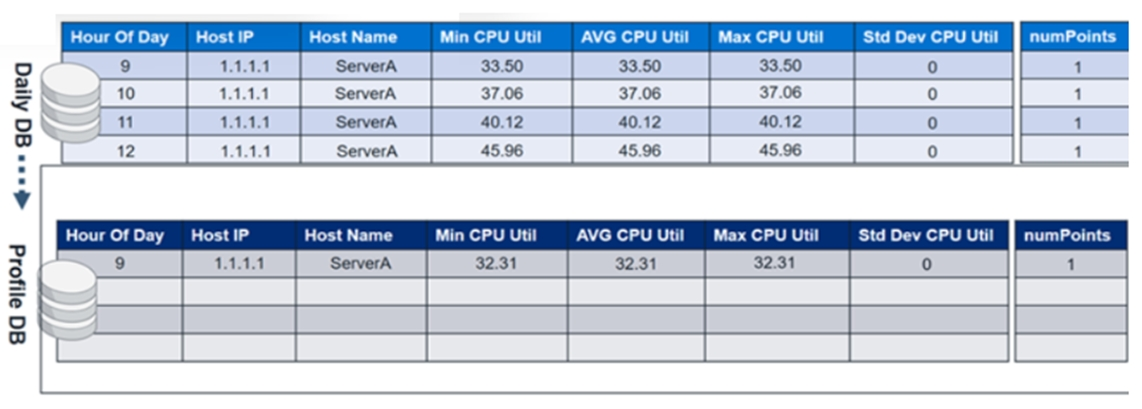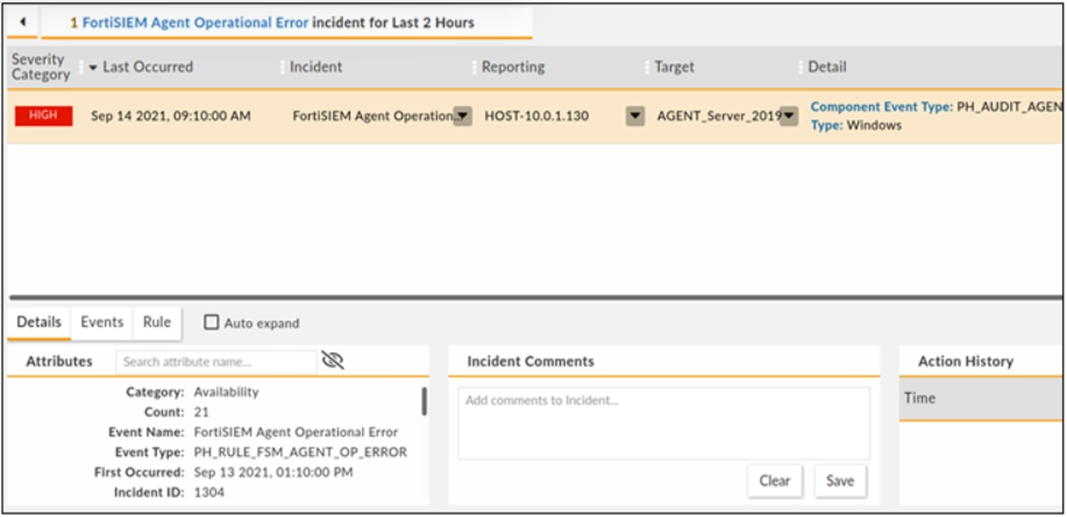Fortinet NSE 7 - Advanced Analytics 6.3 NSE7_ADA-6.3 Exam Practice Test
Refer to the exhibit. Click on the calculator button.

Based on the information provided in the exhibit, calculate the unused events for the next three minutes for a 520 EPS license.
Answer : B
The unused events for the next three minutes for a 520 EPS license can be calculated by multiplying the licensed EPS by the time interval and subtracting the total number of events received in that interval. In this case, the calculation is:
520 x 180 - 27000 = 73460
How can you invoke an integration policy on FortiSIEM rules?
Refer to the exhibit. Click on the calculator button.

The profile database contains CPU utilization values from day one. At midnight on the second day, the CPU utilization values from the daily database will be merged with the profile database.
In the profile database, in the Hour of Day column where 9 is the value, what will be the updated minimum, maximum, and average CPU utilization values?
Answer : B
The profile database contains CPU utilization values from day one. At midnight on the second day, the CPU utilization values from the daily database will be merged with the profile database using a weighted average formula:
New value = (Old value x Old weight) + (New value x New weight) / (Old weight + New weight)
The weight is determined by the number of days in each database. In this case, the profile database has one day of data and the daily database has one day of data, so the weight is equal for both databases. Therefore, the formula simplifies to:
New value = (Old value + New value) / 2
In the profile database, in the Hour of Day column where 9 is the value, the updated minimum, maximum, and average CPU utilization values are:
Min CPU Util = (32.31 + 32.31) / 2 = 32.31 Max CPU Util = (33.50 + 33.50) / 2 = 33.50 AVG CPU Util = (32.67 + 32.67) / 2 = 32.67
How can you empower SOC by deploying FortiSOAR? (Choose three.)
Answer : B, D, E
You can empower SOC by deploying FortiSOAR in the following ways:
Collaborative knowledge sharing: FortiSOAR allows you to create and share playbooks, workflows, tasks, and notes among SOC analysts and teams. This enables faster and more consistent incident response and reduces duplication of efforts.
Reduce human error: FortiSOAR automates repetitive and tedious tasks, such as data collection, enrichment, analysis, and remediation. This reduces the risk of human error and improves efficiency and accuracy.
What is the disadvantage of automatic remediation?
Refer to the exhibit.

How long has the UEBA agent been operationally down?
Answer : A
The UEBA agent status shows that it has been operationally down for one day and three hours ago (1d3h). This means that it has been down for 24 hours plus three hours, which is equal to 21 hours.
Why can collectors not be defined before the worker upload address is set on the supervisor?
Answer : C
Collectors cannot be defined before the worker upload address is set on the supervisor because collectors receive the worker upload address during the registration process. The worker upload address is a list of IP addresses of worker nodes that can receive event data from collectors. The supervisor provides this list to collectors when they register with it, so that collectors can upload event data to any node in the list.